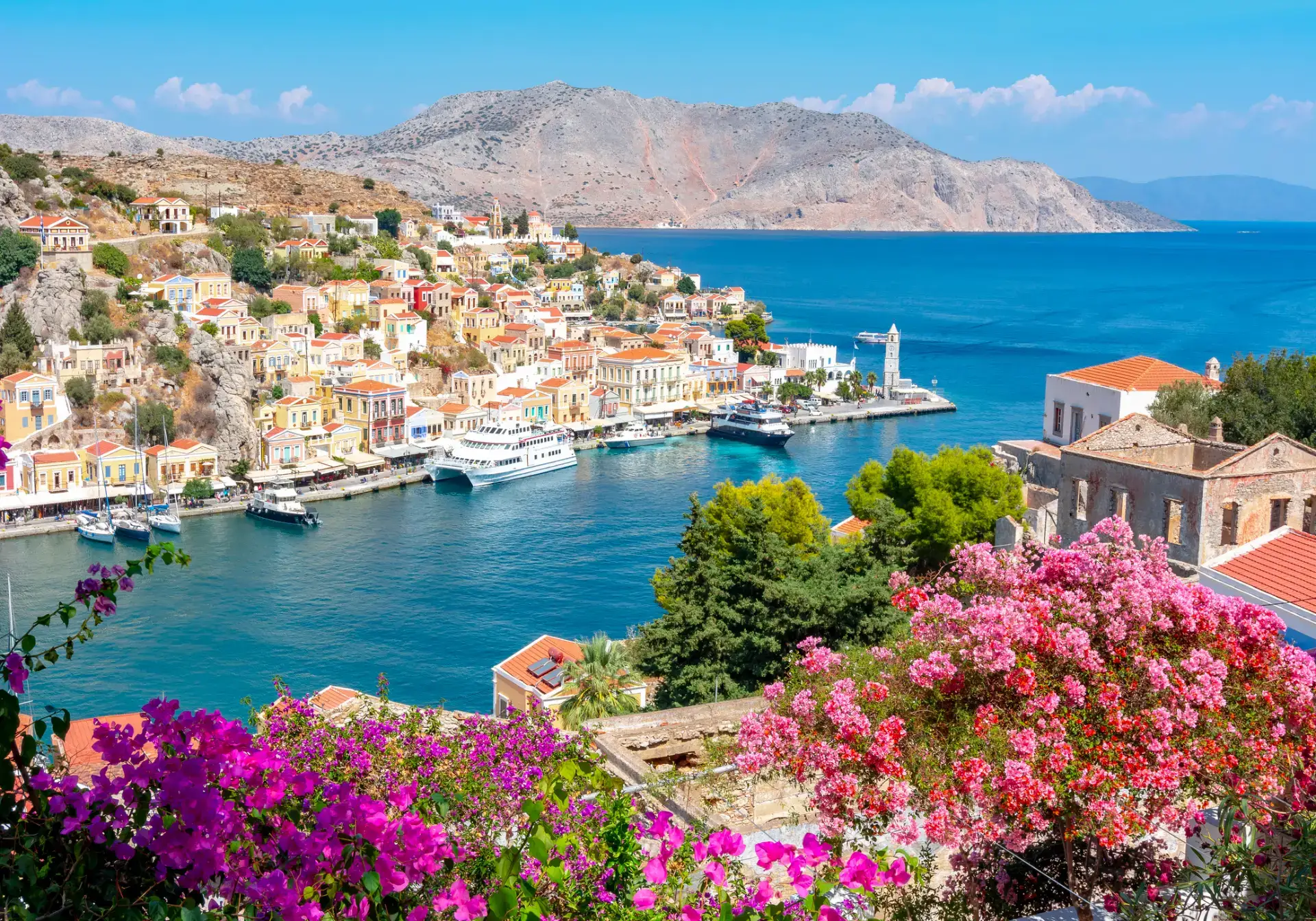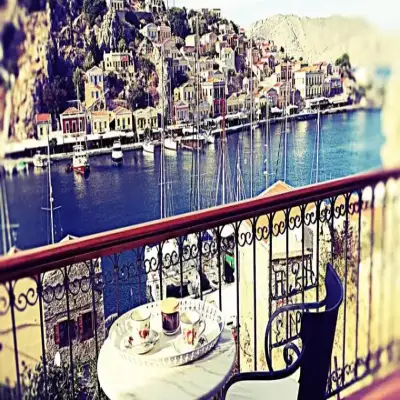
Boutique Hotels in Symi Island
Symi is divided into distinctive areas - Yialos is the main harbour. Chorio, literally 'village', is the top town. Pedi Bay is the valley below Chorio, south of Yialos. Nimborios is the bay and settlement to the north of Yialos. There is a small settlement at Marathounda and a major Monastery complex at Panormitis.
Sightseeing in Yialos, Symi harbour: Katarinettes on the harbour front is where the Germans signed the surrender of the Dodecanese at the end of World War II. A little further along towards the bridge there is a replica of the Lindos ship with a war memorial. The Nautical Museum is at the back of the Town Square and is easily identifiable by the canons outside. Open Tuesday to Sunday from 10.00 to 14.00.
The Town Square is one of the venues for the Symi Festival. St. John's Church has a interesting burial ground as well as a fine, recently restored pebble courtyard which is also a Festival venue, as is the nearby Petrides School. The Kataratkis, a steep footpath at the back of the harbour towards the Castle and Chorio, was the ancient road connecting the village with the harbour before the Kali Strata was built in the 19th century. The Kali Strata starts at the back of the square in the south-western corner of the harbour and is about 350 steps up to Chorio, with interesting 19th century mansions lining the way.
Sightseeing in Chorio, the 'village' area: The Kali Strata opens into Syllogos Square (also a Festival venue), from the back of which a road leads round behind the Castle and to Lemonitsa Church. There are spectacular views over the harbour and this route eventually connects up with the top of the Kataraktis, the original staircase connecting Yialos to Chorio.
The Castle was rebuilt by the Knights of St. John in the early 15th century on the site of a much older fortification. It survived in reasonable condition until World War II when it was used as an Axis munitions store. This was blown up, destroying the Castle and the Church of the Assumption which was within its walls. Parts of the walls remain and there is a plaque visible, commemorating Filibert de Niallac, the Knight's French Grand Master.
Around the island: There are many old churches and monasteries to be seen. Some of the most accessible are described here: The church of Constantinos and Eleni on the southern slopes of the Vigla along the Panormitis road has gardens, terraces and a well. There is usually someone there in the summer. The monastery of the Archangel Michael at Roukouniotis was built by the knights of St. John in the 14th century on the ruins of an important 5th century monastery, which in turn was built on the remains of a pre-Christian temple. The monastery of Sotiris Megalos, shortly before the road descends to Panormitis, is very picturesque and has spectacular views. There is a sign-posted walk to an old vinery and the ruins of old wine presses.
The Monastery of the Archangel Michael at Panormitis, is the island's most famous monastery. The original church of St. Michael was built around 450 AD on the site of an ancient temple to Apollo. It contains a splendid icon of the Archangel and two interesting museum sections. Overnight accommodation can be arranged. There are other churches and monasteries of interest which are best visited as part of an organised excursion or by boat as foot access is difficult, or in the case of Nimos, impossible.


